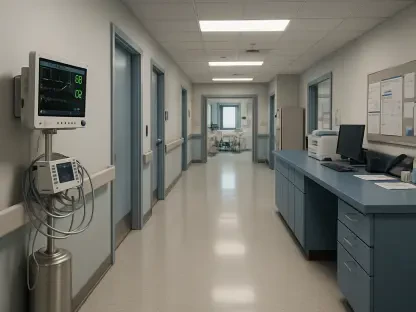In a recent move signaling potential change within the healthcare domain, approximately 50 health insurance plans, including major entities like UnitedHealthcare, SCAN Health Plan, Kaiser Permanente, and Humana, have pledged to reduce the burden of prior authorizations. This commitment is part of a broader, government-endorsed initiative poised to transform healthcare access. The strategy aims to streamline processes and alleviate the administrative load that falls heavily on both healthcare providers and patients. Prior authorization, a requirement for healthcare providers to obtain approval from insurers before delivering certain services, often impedes timely and effective care. This procedural demand can result in delays that affect patient outcomes and escalate providers’ workloads, creating roadblocks that disrupt healthcare continuity. The pledge by the health plans has been welcomed as an initial step to address prevalent inefficiencies and reduce frustrations faced by stakeholders.
Yet, as promising as these reforms appear, they have not entirely escaped criticism. Particularly in focus are post-acute care settings, such as skilled nursing facilities and home health agencies, where challenges persist despite the proposed changes. Critics argue that reform measures may not be comprehensive enough to substantively address issues like high rates of denied or delayed authorizations in these critical care environments. There is concern that many of the “new” procedures reflect pre-existing regulatory obligations rather than pioneering interventions. By exploring impacts, possibilities, and limitations inherent in these reforms, a clearer picture emerges of the paths forward in effectively handling prior authorizations.
The Challenges of Prior Authorization in Healthcare Delivery
Prior authorization has long been regarded as a necessary—albeit cumbersome—element in ensuring patients receive appropriate care without unnecessary expenditure. Its underlying aim is to verify medical necessity and manage costs, yet for providers, obtaining prior approval often translates into a significant administrative load. Navigating through organizational layers and awaiting insurer decisions can lead to treatment delays that bear significant consequences for patient care. Providers assert that administrative burdens of this kind detract from clinicians’ primary focus, compounded by stress and demanding resources that could otherwise contribute to medical services.
Despite widespread acknowledgment of these challenges, transforming concurrent processes remains complex. While health insurance plans commit to reforms, the pledge’s voluntary nature raises questions about consistency and comprehensive adoption. Not all insurers have committed to the initiative, resulting in variability in the anticipated benefits experienced by patients and providers. Furthermore, the solutions proposed seem primarily aimed at reducing barriers through centralizing electronic prior authorization, which, though a promising notion, still demands technical integration and oversight. From weaknesses within existing systems to disparities in implementation across different care settings, this undertaking is characterized not by swift resolution but nuanced navigation and iterative improvement.
Critiques and Limitations of the Proposed Reforms
Though prior authorization reforms have sparked optimism, concerns persist about their true implications. Post-acute care sectors, encompassing environments like home health agencies and skilled nursing facilities, feel the pinch from existing limitations. Critics emphasize that reforms do not delve deeply into systemic inefficiencies that foster authorization denials and impediments. These hurdles impact care delivery for vulnerable populations reliant on post-acute services, emphasizing the need for dedicated attention to ensure reforms address critical inefficiencies. While health insurer representatives, including America’s Health Insurance Plans (AHIP), champion procedures as timely innovations, detractors remain skeptical about whether they will lead to substantial enhancements.
Advocacy groups argue for an encompassing, actionable approach to ensure reforms furnish meaningful ameliorations in all healthcare facets, including high-frequency, high-impact areas often overlooked in the broader scheme. Although standardization and transparency are touted as solutions, effective implementation involves ensuring alignment with healthcare settings’ distinct needs. Paralleling the voluntary nature of health plans’ participation, questions arise about overarching coherence. As implementation unfolds, fostering effective, widespread adjustments will require reevaluation and refinement, recognizing disparities and encapsulating comprehensive responses. The success of reforms lies not simply in reduced administrative hurdles but visible improvements in care delivery.
The Role of Technology in Healthcare Reforms
Technology integration sits at the heart of anticipated improvements, promising streamlined processes that could significantly lessen administrative burdens. The transition towards electronic prior authorization systems is pegged as a cornerstone of these initiatives, encouraging efficiency in approval operations while reducing manual labor. Tools like Fast Healthcare Interoperability Resources (FHIR) exemplify the larger trajectory towards real-time data exchanges, capable of evolving medical processes into informed, expedited decision-making systems. Used adeptly, such technology could underpin rapid transformations, simplifying bureaucratic demands and prioritizing service over paperwork.
But while innovation is lauded as a potential game-changer, the theoretical allure of modernization may outpace its practical application. Ensuring technology adoption necessitates extensive training, infrastructure investment, and continual system oversight—elements that don’t manifest overnight or ubiquitously within existing confines. While technological development enhances potential for change, meaningful reform mandates meticulous planning and resource allocation to bridge present efficiency and effectiveness. Awareness of disparities inherent in diverse healthcare contexts is indispensable in ensuring technological advances support all stakeholders equitably, transcending boundaries and bolstering consistent standards of care.
Future Directions and Considerations
Recently, around 50 health insurance plans, including big names like UnitedHealthcare, SCAN Health Plan, Kaiser Permanente, and Humana, have committed to easing the burden of prior authorizations. This initiative, supported by the government, aims to simplify processes and reduce the heavy administrative tasks on both healthcare providers and patients. Prior authorization requires providers to get insurer approval before offering certain services, often delaying care. These demands can cause delays impacting patient outcomes and increasing workloads for providers, leading to disruptions in healthcare services. This pledge by health plans is seen as a positive first step in addressing inefficiencies and reducing stakeholders’ frustrations.
However, not everyone is satisfied with these reforms. Post-acute care settings, like nursing facilities and home health agencies, still face challenges. Critics say the new measures may not sufficiently tackle high rates of denied or delayed authorizations in these critical care areas, seeing them more as regulatory obligations rather than innovative solutions.









